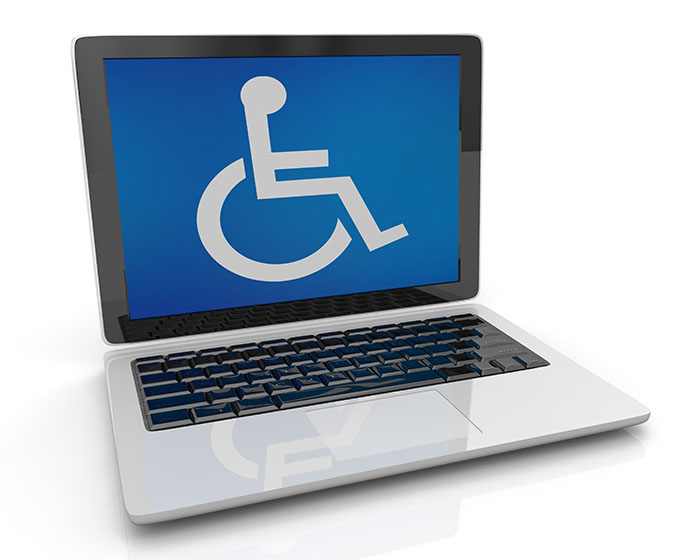by James Henry Dunne, Esq.
© 2023
All Rights Reserved
Is Your Business Website ADA Compliant? 10 Steps to Avoid Joining the Long List of Hospitality Businesses Embroiled in Costly ADA Lawsuits
ADA compliance is crucial for every business engaging with the public. Countless lawsuits are being filed against businesses for allegedly violating the Americans with Disabilities Act by failing to provide accessible websites and mobile apps (not just accessibility to physical locations) where the disabled user is unable to enjoy the full access and features of the business’ website. This applies to businesses big and small; neither the size nor reach of your business matter. The restaurant, hotel, and food service industries are particularly vulnerable and a preferred target for legal complaints. While some courts have interpreted the ADA to only apply to business websites that also have brick-and-mortar locations, several jurisdictions have also applied these ADA requirements to web-only businesses. These suits had mostly been targeted at businesses engaged in transactions and commerce on the site itself (featuring menus of products and payment/transaction functionality). More recently, suits are starting to arise with informational business websites that do not transact business on the site itself.
According to the American Bar Association, “federal courts across the country have been flooded with well over 8,000 digital accessibility lawsuits filed or removed between 2017 and 2020. In 2020, over 85 percent of these federal filings occurred in three states— New York, Florida and California. In 2021 alone, over 4000 suits were filed. Since 2018, website and mobile app accessibility lawsuits have made up roughly one-fifth of all ADA Title III filings in federal courts. These numbers do not include the substantial number of website and mobile app cases filed in state courts, demand letters that are resolved prior to the filing of any lawsuit, and DOJ enforcement actions that resolve before suit is filed.”
Source: https://www.americanbar.org/groups/law_practice/publications/law_practice_magazine/2022/jf22/vu-launey-egan/
The number of threats of litigation (demand letters seeking settlement) made by complainants to businesses is immeasurable and surely higher than the number of lawsuits filed. New York, being one of the most plaintiff-friendly jurisdictions in the United States, has proven to be a fruitful ground for plaintiffs to threaten litigation (and file suits) against businesses. New York State provides for compensatory damages, civil penalties, fines, and attorneys’ fees if the plaintiff is successful in their suit.
Is your business’ website accessible to people who are hearing and/or vision impaired? User features such as alternative text for images, subtitles for audio, and menus that are readable with screen-reading software, are just some of the ways that expose your website to litigation if not fully accessible to the impaired. If you do not meet these standards, your business is vulnerable to litigation.
“These standards” is, unfortunately, up for debate. There is currently no statutory or regulatory guidance on the matter (neither state nor federal). Legal precedent within various jurisdictions, and a 3rd party institution set of guidelines, have emerged as the standards being applied to assess whether your website is ADA compliant.
Title III of the ADA, first enacted in 1990 under then-President George H.W. Bush, brought about sweeping change to our country and ushered in significant modifications to business across all industries, ultimately helping improve accessibility standards for the disabled. “Drive-by” lawsuits were common in the years following the enactment of the ADA. Retail businesses could be targeted by literally driving by a business, visually assessing the potential accessibility of the operation to anyone with a physical disability, and filing suit.
The ADA prohibits discrimination against the disabled:
“No individual shall be discriminated against on the basis of disability in the full and equal enjoyment of the goods, services, facilities, privileges, advantages, or accommodations of any place of public accommodation by any person who owns, leases (or leases to), or operates a place of public accommodation.”
Source: 42 U.S. Code §12182
As time passed, technology advanced, and consumer demands evolved. The brick-and-mortar operations became ADA compliant, but their websites were coming under increasing scrutiny to provide the same accessibility as their physical spaces. With so much being transacted and promoted online, from payment for retail products, making appointments and reservations, food ordering, promoting various business services and products, pdf menus (unable to be translated by screen reading software), job postings, and more, accessibility for the disabled has become more of a contentious matter.
A “place of public accommodation” is now being broadly interpreted and expanded to include websites and social media. In other words, if a disabled individual cannot utilize your website like everyone else, similar to their rights when accessing your physical location, it is being argued that the appropriate accommodations have not been made. Title III of the ADA does not provide civil penalties for violations of the act but does permit private rights of action and allows individuals to bring enforcement actions and seek injunctive relief.
With the ease of the internet at everyone’s fingertips, a website can be targeted by a potential litigant by simply surfing the web to see if screen reading technology is able to fully access and interpret the website, possibly rendering the website and business, a place of public accommodation, inaccessible.
Now, “surf-by” accessibility lawsuits abound. The hospitality industry, in particular, has been bombarded with individual and class action suits and has been the primary target for complaints. It is being argued that people with disabilities (more than 61 million American citizens) are entitled to the full and equal enjoyment that a place of public accommodation provides to its customers because the online website of a business is a “place of public accommodation.”
Is your menu readable with screen reading software for a visually impaired person? Is your online ordering system compliant with current WCAG standards? Can a disabled person make a reservation like anyone else can?
In 2019, the U.S. Supreme Court rejected an appeal from Domino’s Pizza, confirming that the pizza chain must proceed in defending itself against a lower court lawsuit where a blind man alleged that the chain’s website and mobile app were not accessible to people with disabilities, and therefore not in compliance with the guidelines of the Americans with Disabilities Act.
Domino’s had argued that the ADA does not apply to its online platform and should only apply to its brick-and-mortar stores. There is a lack of clarity surrounding ADA compliance and websites, meaning this case has had the potential to set a precedent regarding what exactly a “place of public accommodation” is, yielding a profound impact on not just the hospitality industry but to any businesses (big or small) conducting trade online.
Dominos argued that the law would present an unreasonable burden on their digital presence: “Each defendant must figure out how to make every image on its website or app sufficiently accessible to the blind, how to render every video or audio file sufficiently available to the deaf, or how to provide content to those who cannot operate a computer or mobile phone.”
The case was recently decided against Dominos. The fine itself was minimal, but the attorney fees Dominos had to incur, for themselves and for the plaintiff, were very high.
Since these suits attacking large and well-known companies have been prevalent for several years now, large restaurant and hotel companies have mostly made the updates and continue to monitor their sites to be within compliance. In 2016, for example, lawsuits in the hospitality industry alone included Capital Grille, Del Frisco’s Grille, Olive Garden, Outback Steakhouse, and PF Chang’s, among others, alleging that some or all of the companies’ websites are inaccessible to the blind and visually impaired.
Now that those large companies in the hospitality industry have mostly addressed the issue to avoid litigation, plaintiffs and law firms are now pursuing business across all industries, with thousands of lawsuits and demand letters threatening litigation.
10 Steps You Can Take
The Web Content Accessibility Guidelines (WCAG) 2.0 and 2.1 Level AA, developed by the World Wide Web Consortium (W3C), has emerged as the benchmark standard. The WCAG, a private entity, provides the guidelines you are expected to adhere to. You should share these with your website designer to ensure compliance before a suit is potentially filed.
Furthermore, website accessibility evaluation tools are available to help steer your designer. These software programs and online services will help your site designer determine if web content meets accessibility guidelines. It should be noted that even if you are in the midst of a suit, you should still remediate the issue to reduce potential damages and to avoid ‘piling on’ of additional legal action.
The WCAG highlights the following primary categories related to your website (and mobile app).
Basically, the guidelines seek to ensure that your website is:
Perceivable;
Operable; Understandable; and Robust.
Perceivable:
1- Text Alternatives for Relevant Images: include text explaining any relevant, non-decorative content. Text should be coded so that it can be converted into braille, speech, or enlarged text;
2- Colors: ensure that colors have enough contrast. Color should not be the only way to convey information or prompting the user;
3- Subtitles for Pre-Recorded Video: include captions for pre-recorded video content, and make sure that any prompts using sound can also be followed using text.
Operable:
4- Keyboard Accessible: content can be operated using a keyboard interface; 5- Time Limits Adjustable: users should be able to turn off or adjust time limits; 6- Flashing Content: web pages must not contain anything that flashes more than 3 times per second. Avoid flashing content to be sensitive to users with epilepsy or who may otherwise be susceptible to seizures.
Understandable:
7- Language: the language of each page can be determined by a computer program; 8- Predictability: web pages appear and operate in a predictable way; 9- Input Assistance: assist users if an input error is detected on something they submit on the website or app.
Robust:
10- Compatibility with Assistive Technologies: make websites as compatible as possible with screen readers and other disability assistive technologies.
Source: https://www.w3.org/WAI/standards-guidelines/wcag/
Additional Recent Case Law and Considerations:
It should be noted that some recent lawsuit decisions in the Southern District of New York have begun to give some hope to businesses with an online presence, but operators are certainly not out of the weeds regarding website compliance.
Mendez v. Apple, Inc. 18-cv-07550 (LAP) (S.D.N.Y. March 28, 2019) Diaz v. Kroger Co., No. 18 Civ. 7953, 2019 U.S. Dist. LEXIS 93177, *7 (S.D.N.Y. June 4, 2019)
The takeaway from these cases, in short, is that both defendants successfully argued that they had already begun to undertake steps in compliance with the WCAG standards BEFORE the lawsuit was filed. Furthermore, they successfully argued that their website was currently in compliance, the issues in the claim were remedied, and that the companies would continue to keep their websites in compliance in the future.
Nonetheless, litigation still abounds, since many businesses are not addressing the WCAG standards or simply fall short. You will need to pay costly legal fees if you are not in compliance if sued. If a lawsuit is indeed threatened or filed, settlement is often a less costly and time-consuming option.
Final Thoughts:
To avoid riding the rough seas of website compliance litigation, consider the following:
- Even if your website, when designed, was in compliance, it may not be up-to-date with newer software enabling the disabled to seamlessly access it, or up-to-date with revisions to your site or your web hosts upgrades.
- Have an audit of your website by a reputable web development company, having them follow the WCAG guidelines.
- Taking prompt remedial steps to comply with the WCAG’s accessibility standards before an action arises is essential to avoid a costly payout.





